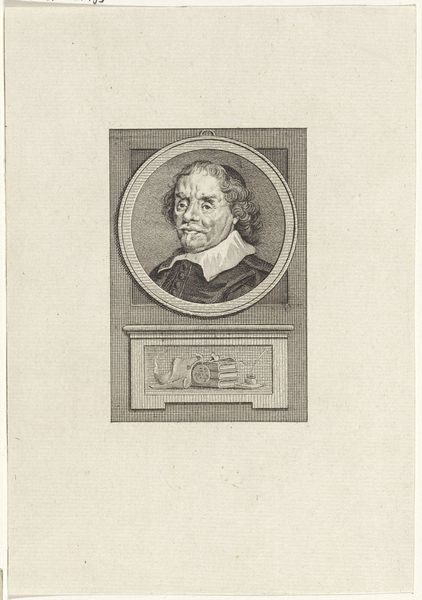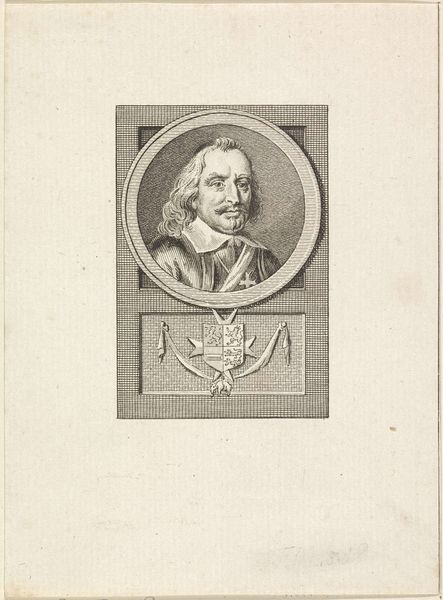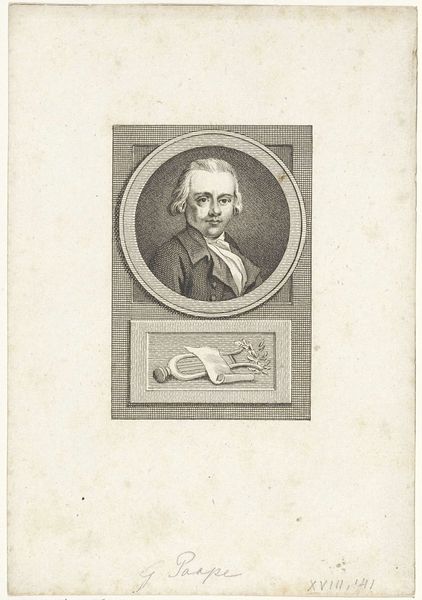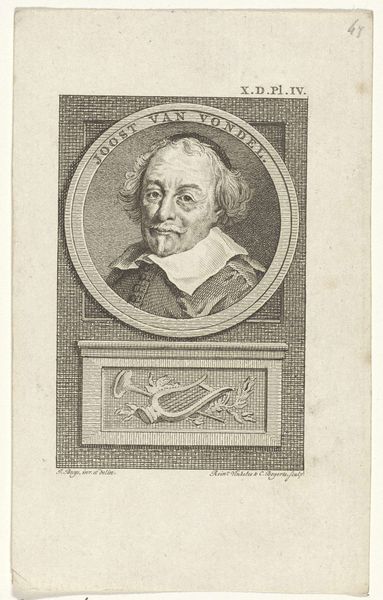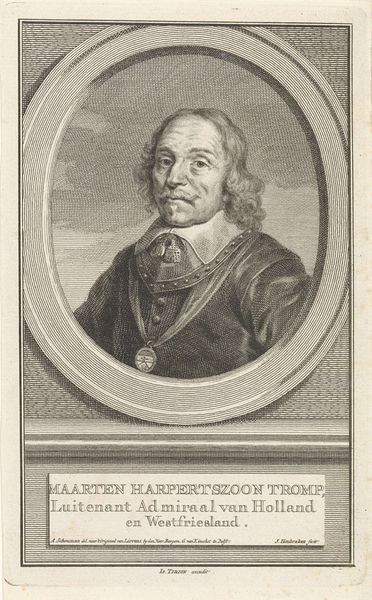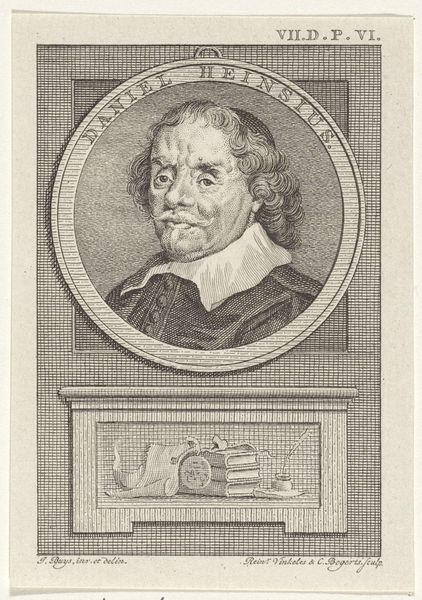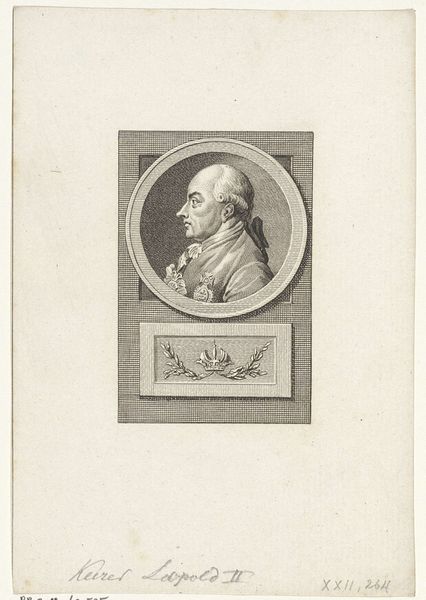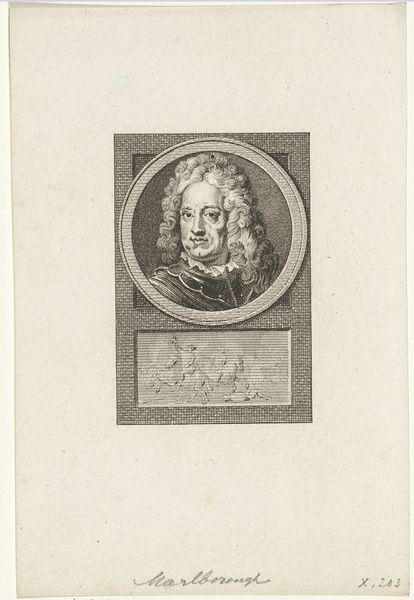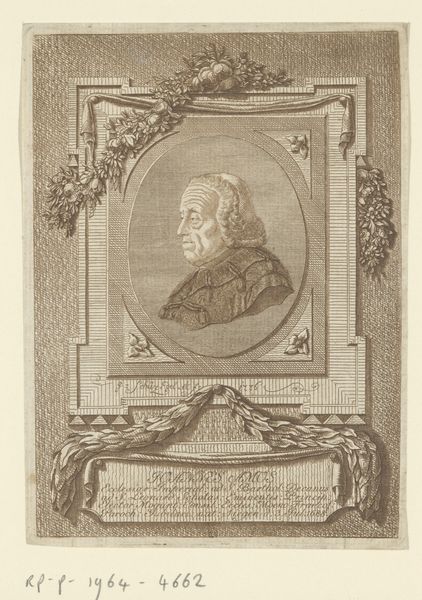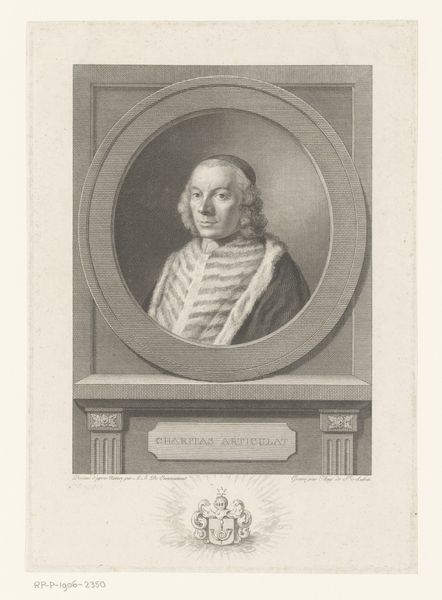
Dimensions: height 156 mm, width 110 mm
Copyright: Rijks Museum: Open Domain
Curator: Welcome to the Rijksmuseum. We’re standing before an engraving, "Portret van Marten Harpertsz Tromp," crafted sometime between 1783 and 1795 by Reinier Vinkeles. Editor: It's rather austere, isn’t it? Even severe. The framing is so rigid. The detail is incredible for a print, but the overall effect feels quite… controlled. Curator: Indeed. The control reflects the evolving public role of portraiture at the time. Tromp, a celebrated naval hero, needed to be depicted in a manner that conveyed authority and virtue. Vinkeles’ print was designed for circulation, aimed at shaping public perception. Editor: Absolutely. Tromp's gaze is direct, unflinching even, as if challenging the viewer. The laurel wreath, just barely visible amidst what appears to be disarray, draped across the cannon below him feels… purposeful. Trophies laid low. Curator: Note how that lower image— cannon, flags, and nautical elements — serves to symbolize Tromp's military achievements, reinforcing his reputation for generations. It's an overt visual encoding of valor. The portrait itself is more about projecting power. The baroque influence speaks to ideals about authority in his era. Editor: The detail on that weaponry tells a story of its own; the precise engraving capturing the texture of metal and cloth—it suggests almost a fetishization of the implements of war, not just their triumph, as well, not only capturing public image of naval heroes, but hinting cultural anxieties. Curator: Exactly! Consider the social and political upheavals of the period. The Dutch Republic was navigating treacherous waters both literally and figuratively. An idealized image of a strong, capable leader was strategically valuable. Prints allowed wide circulation of specific idealized messaging. Editor: A visual message carefully curated, meticulously etched and re-distributed throughout a society craving certainty. This image served not just to remember Tromp but to solidify, indeed monumentalize his place in history – controlling narratives of national strength. The effect is almost architectural. Curator: Looking at it with fresh eyes reveals it's less a likeness and more a carefully constructed emblem. This gives us a glimpse into the dynamic relationship between power, image, and the public, so evident throughout his life. Editor: A fitting end to our short voyage. Reflecting on that icon of naval force with all of those carefully-etched allegorical touches makes one think anew about visual narratives—about our own image obsessed society even.
Comments
No comments
Be the first to comment and join the conversation on the ultimate creative platform.
